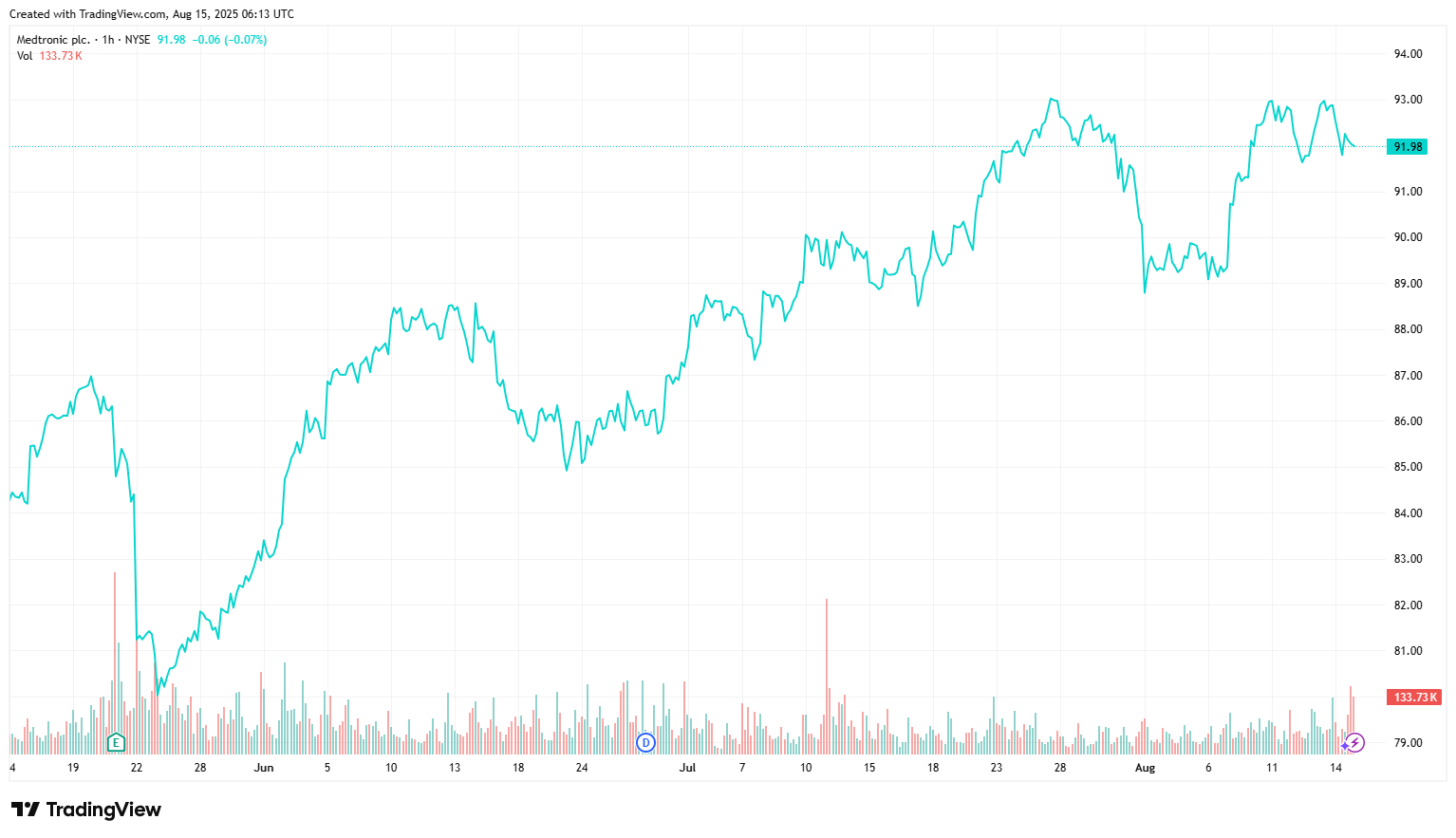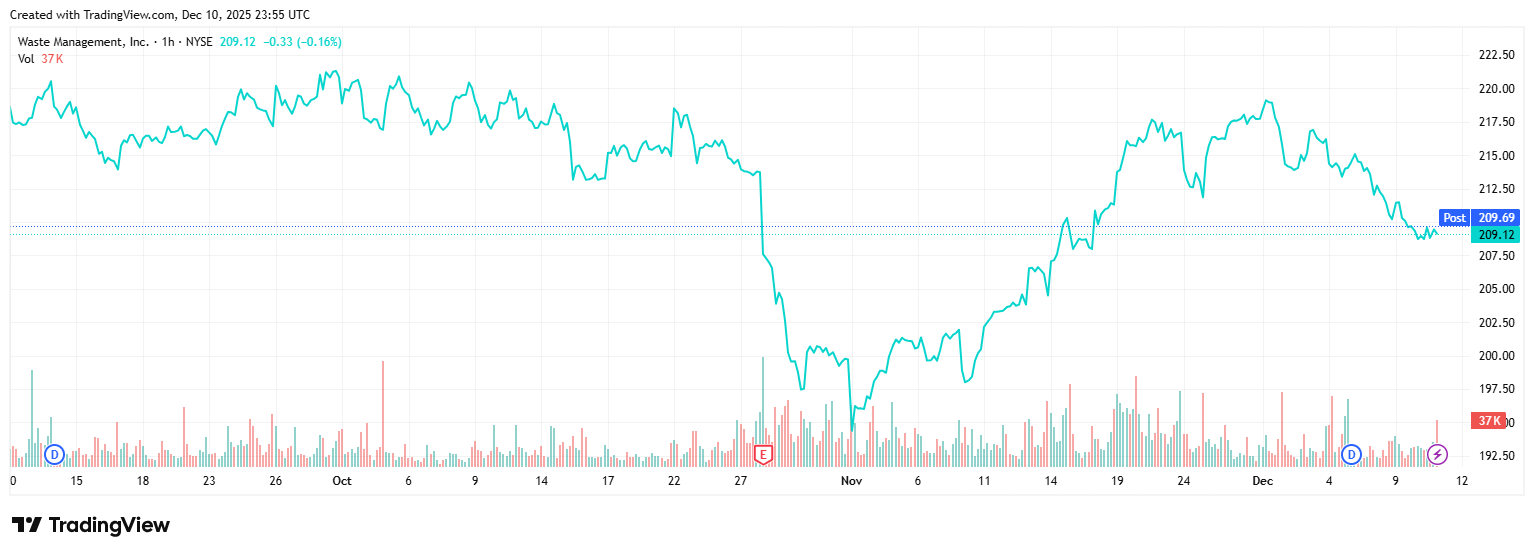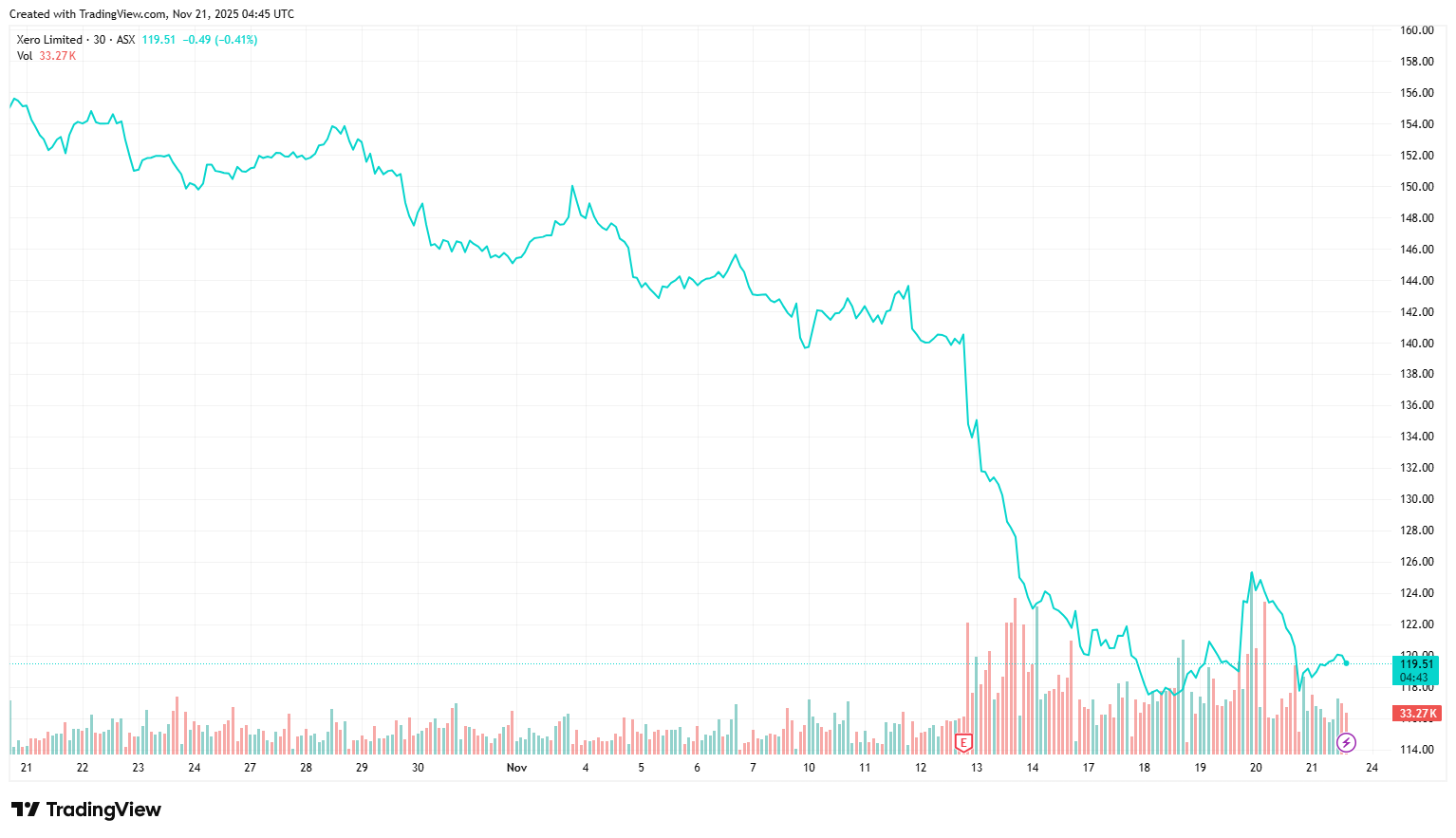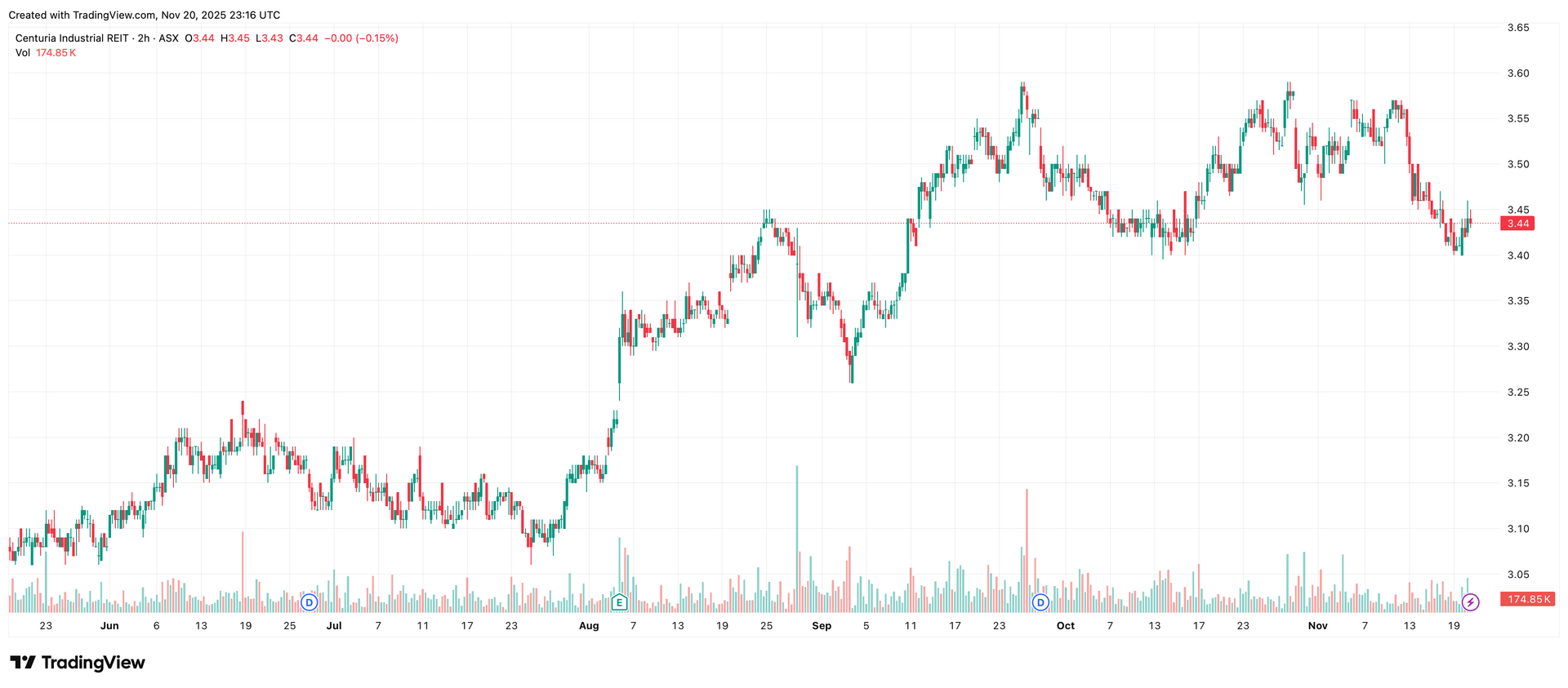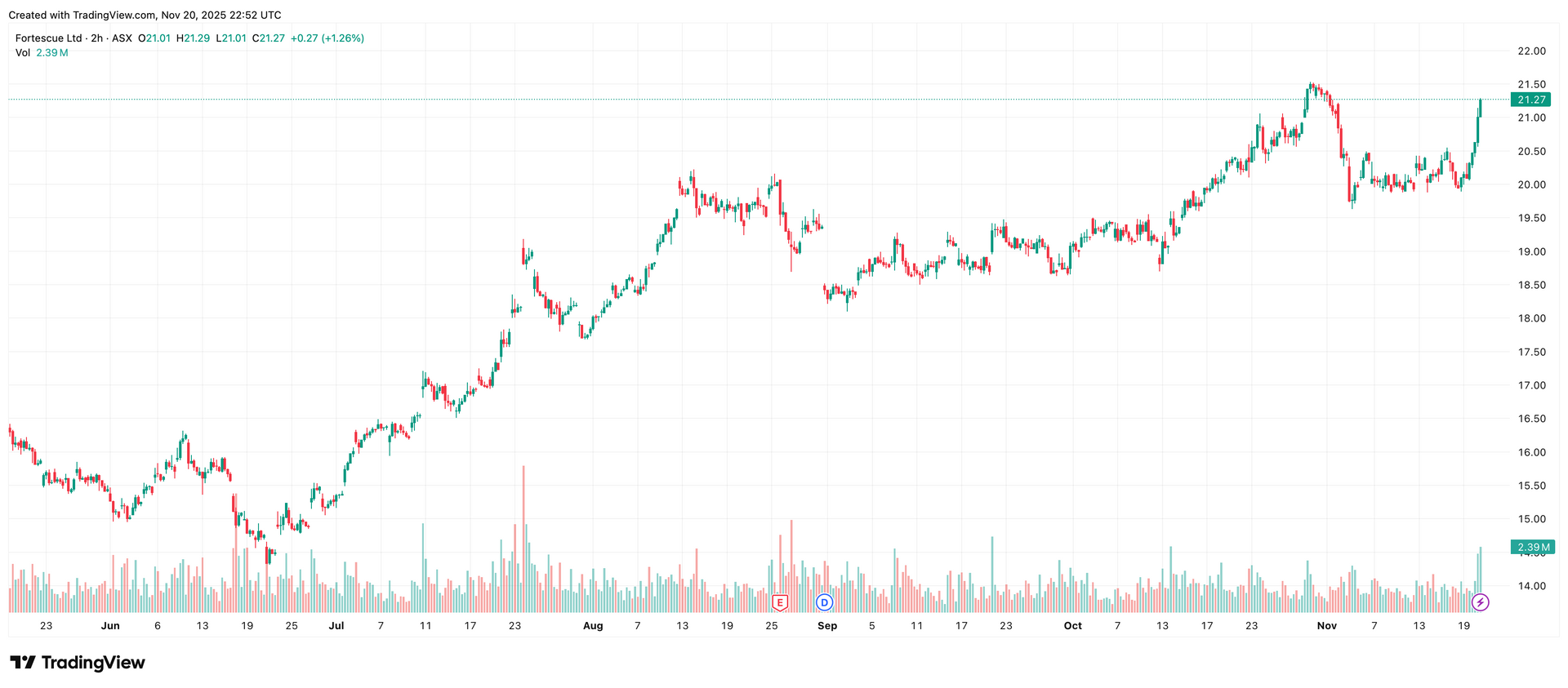Stock Spotlight: Westpac Banking Corporation (ASX:WBC)
Westpac Banking Corporation (ASX:WBC) is one of Australia’s ‘Big Four’ banks and one of the largest companies listed on the ASX. Westpac plays a vital role in Australia’s financial system, offering a broad range of services across retail, business, institutional banking and wealth management. With over 12.7 million customers and the nation’s largest ATM network, Westpac has a significant footprint in both personal and corporate finance in Australia and New Zealand.
For investors, WBC shares hold strong appeal—long-term growth and generous dividends make WBC stocks a good match for stability and income-focused investment strategies. Popular with both institutional and mum-and-dad investors, ASX:WBC is a stock to watch for those tracking the financial sector or seeking reliable returns within a diversified portfolio.
About Westpac Banking Corporation
Westpac Banking Corporation (ASX: WBC) is Australia’s first bank and oldest company. Established in 1817 as the Bank of New South Wales, it has delivered over 200 years of continuous service. In 1982, following its merger with the Commercial Bank of Australia, it adopted the name Westpac Banking Corporation.
Over the decades, Westpac has expanded through strategic mergers and acquisitions of other financial institutions, while also streamlining its focus by exiting businesses such as general insurance, lenders mortgage insurance and auto finance in 2021.
Today, Westpac is one of Australia’s "Big Four" banks and operates the country’s largest ATM network. It serves over 12.7 million customers across a portfolio of trusted brands: Westpac, St.George, Bank of Melbourne, BankSA, BT, and RAMS. Westpac’s operations span several key divisions: Consumer Banking (home loans, savings, and day-to-day banking), Business and Wealth (serving SMEs, commercial, agribusiness, and high-net-worth clients), Westpac Institutional Bank (supporting large-scale clients across Australia and New Zealand), and Westpac New Zealand.
Westpac maintains a strong presence in Australia, New Zealand and the Pacific, and is a central pillar of Australia’s financial sector.
What Makes WBC Stocks A Strong Investment Choice?
ASX: WBC is a popular share pick for investors seeking income and stability. Westpac offers a strong brand presence, a diversified portfolio, and a long-standing history of returns.
WBC stocks are buoyed by the strong overall returns of Australia’s banking sector and, as the ASX’s fifth-largest listing by market capitalisation, it is considered a core stock in the investment portfolios of both institutional and mum-and-dad investors.
By regularly offering grossed-up WBC dividend yields of around 7–8%, WBC shares could be considered particularly attractive to income-focused investors. These generous dividends, a strong balance sheet, and a commitment to streamlining its operations, underpin WBC’s overall investment appeal.
Key Stats
Key Stats
Source: Yahoo Finance, ASX. Data as of 18/11/25.
Price Performance
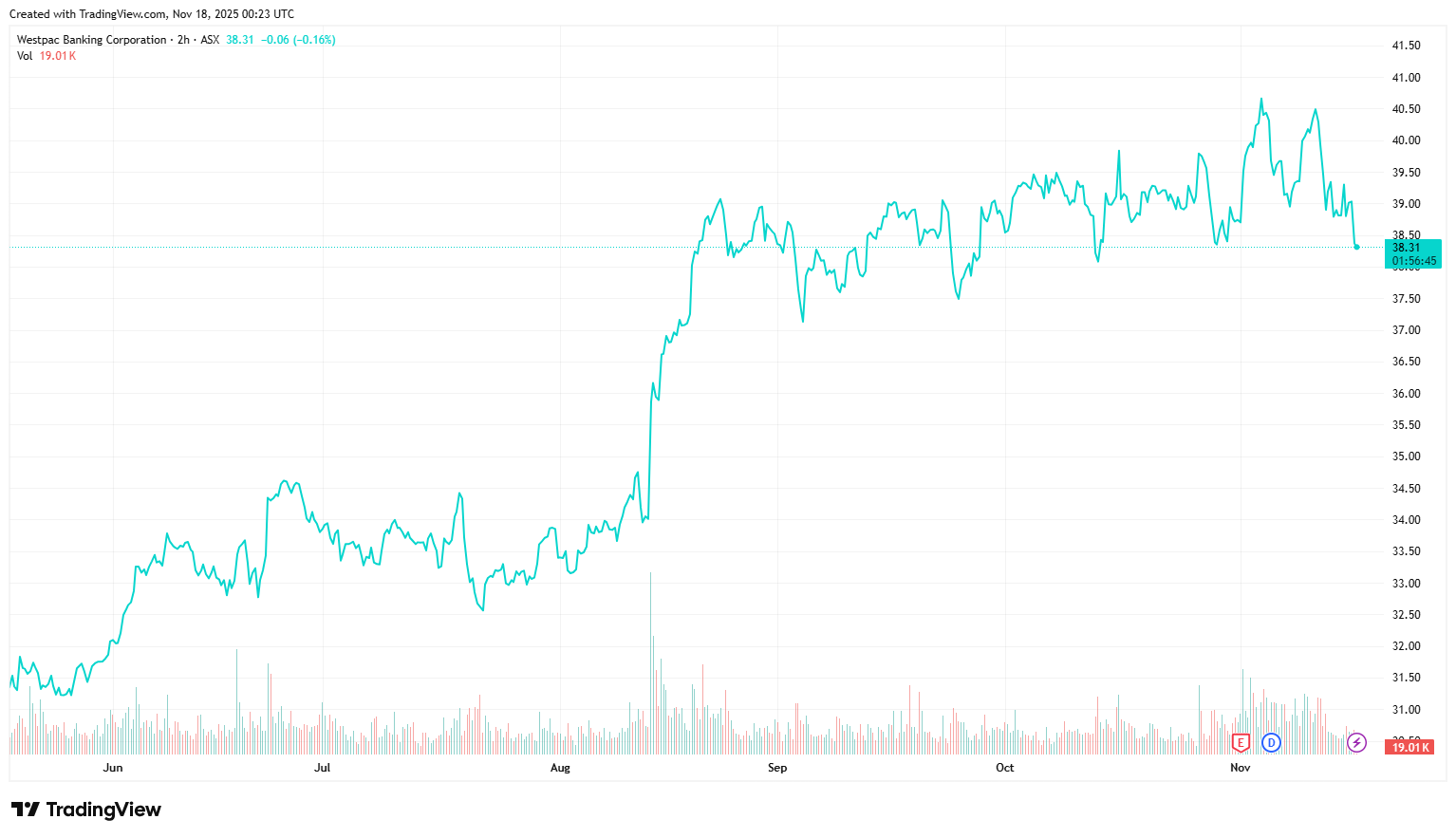
Growth Potential
Looking ahead, Westpac’s growth is expected to be modest. The Australian banking sector faces pressure from slowing credit growth and mortgage competition. At the same time, business recovery and increasing demand for digital financial services offer room for longer-term expansion. As one of the major players in the industry, Westpac is well positioned to benefit, provided it can navigate current headwinds and deliver on its strategic initiatives.
Internally, Westpac’s recent performance reflects a transitional phase. Westpac’s cost-to-income ratio has been elevated compared to peers, and the bank has made significant investments in its UNITE program, aimed at modernising the bank’s technology infrastructure and driving long-term efficiency. While associated costs have hit the bank’s profitability in recent times, it anticipates these investments will pay off in the medium term.
Westpac Banking Corporation’s aim is to become the customer’s 'number one bank and partner through life.' Initiatives that focus on customer experience, greater accessibility and enhanced scam prevention could strengthen Westpac’s market position and drive greater future growth.
We see growth potential in WBC for the following reasons:
- Trading on fairly fully valuation – forward PE-multiple of 18.8x and P/B of 1.8x.
- We would suggest a dividend yield of ~4% (before franking or special dividends/buybacks) remain acceptable for dividend focused investors.
- Strong oligopoly position in Australia (along with three other major banks in CBA, ANZ, NAB).
- While the Reserve Bank of Australia (RBA) is likely to keep monetary policy on hold over the coming months, further rate cuts will see increased pressure on group net interest margin (NIM). A 0.25% cut to the cash rate could impact group NIM by 1-2bps.
- Management is focused on lowering the bank’s cost to income ratio, noting that total productivity is expected to be at least $500m in FY26. Therefore, good progress or exceeding market expectations (e.g. Project UNITE) on the cost front could be a positive share price catalyst.
- Improving loan growth profile and potential to grow above system growth.
- Better than expected outcome on net interest margin (NIM).
- Excess capital presents the potential for additional capital management (buybacks). WBC notes it has approximately $3.1bn of excess capital.
- Strong provisioning coverage.
- A well-diversified loan book.
Upcoming Innovations From Westpac Banking Corporation
Westpac is undertaking a major digital transformation to streamline operations and enhance customer experiences through its UNITE program. So far, Westpac has launched 39 initiatives, decommissioned over 200 legacy applications, consolidated data centres, and rolled out a new CRM system across St.George, Bank of Melbourne, and BankSA. This large-scale overhaul has earned recognition as one of Australia’s top technology projects.
Westpac is also embracing AI and data innovation to stay ahead of the curve. With the recent appointment of Dr. Andrew McMullan as Chief Data, Digital and AI Officer, the bank is sharpening its focus on advanced analytics and automation. Its ‘customer cortex’ AI system is already helping personalise banking experiences and detect scams.
Westpac is also making an impression in online banking and wealth management, with The Forrester Digital Experience Review™ 2024 giving its banking app top rating, and its wealth management platform also earning an award.
WBC Shares Returns & Investor Sentiment
In the past year to June 2025, the WBC share price on the ASX has risen approximately 26%. This compares favourably to overall growth of the ASX 200 of around 12%, and is far ahead of ANZ Group Holding’s yearly return of <5%. However, it trails the Commonwealth Bank's 46% surge, and it should be noted that some analysts suggest WBC may currently be overpriced, trading at a premium to its fair value.
Recently, Westpac Bank experienced a dip in first-half net profit, largely due to margin compression, along with increased initial costs associated with implementing its UNITE streamlining strategy. The banking climate that Westpac will have to navigate in its immediate future is expected to remain somewhat challenging, though longer-term growth is still expected. On balance, Australian ‘Big Four’ banking stocks—including ASX: WBC—are considered a strong stock choice for long-term investors.
Investment Tips For Buying Westpac Banking Corporation (ASX:WBC)
When evaluating Westpac (ASX: WBC) shares, investors should look beyond just the current share price. Key performance indicators such as return on equity (ROE), cost-to-income ratio, and loan impairment provisions provide insight into management effectiveness and the bank’s financial resilience. It’s also important to consider earnings per share (EPS), the price-to-earnings (P/E) ratio, and dividend yield to assess whether Westpac aligns with an investor’s income and growth objectives.
The performance of Westpac—like other members of Australia’s ‘Big Four’ banks—is strongly influenced by macroeconomic factors such as interest rates, inflation, and employment levels. These banks are typically seen as offering steady, reliable returns rather than rapid growth, with the added appeal of attractive dividend yields. As such, WBC shares can serve as a stabilising component in a diversified portfolio, especially when balanced against more volatile sectors like technology or resources.
While many investors favour Westpac for long-term, buy-and-hold strategies, its high trading volumes also provide liquidity, making it a viable option for those considering shorter-term market moves.
Key Risks
- Intense competition for loan growth.
- Margin pressure.
- Limited opportunities over the near term to increase the current share buyback.
- Housing market stress.
- Increase in bad and doubtful debts or increase in provisioning.
- Funding pressure for deposits and wholesale funding (increased funding costs).
- Any legal fees, settlements, loss or penalties.
Frequently Asked Questions.
What factors are driving the performance of Westpac Banking Corporation (ASX: WBC) in the current market?
The WBC share price (ASX) is shaped by rising interest rates, competitive pressure on margins, operating costs, and broader economic trends such as inflation and employment levels.
How does Westpac’s dividend yield compare to other ASX-listed banks & is it sustainable?
Westpac offers a competitive grossed-up dividend yield of around 7–8%, on par with peers like NAB and ANZ. While recent earnings pressure exists, the yield remains relatively sustainable given its strong capital position.
How has Westpac responded to economic fluctuations & what strategies are in place to weather economic downturns?
Westpac is focusing on cost reduction and operational simplification through its UNITE program, along with digital transformation to improve customer experience, enhance scam protection and create resilience in the face of economic challenges.
What impact will regulatory changes and government policies have on Westpac’s operations & stock performance?
Regulatory shifts can increase compliance costs and scrutiny, and can potentially affect investor sentiment and operational flexibility.
How is Westpac positioning itself in the digital banking space & what technological innovations are in the pipeline?
Westpac is investing heavily in AI, cybersecurity, and mobile banking, with initiatives like the ‘customer cortex’ AI system and an award-winning banking app helping it enhance internal processes and customer digital experiences.
What are the long-term growth prospects for Westpac & how does it plan to achieve sustained value for shareholders?
While modest growth is anticipated in the near term, Westpac aims to deliver long-term value through digital innovation, cost efficiency, enhanced customer service and stable dividends, supported by a strong market position and strategic transformation.
Subscribe to our newsletter
Disclaimer: This article does not constitute financial advice nor a recommendation to invest in the securities listed. The information presented is intended to be of a factual nature only. Past performance is not a reliable indicator of future performance. As always, do your own research and consider seeking financial, legal and taxation advice before investing.
